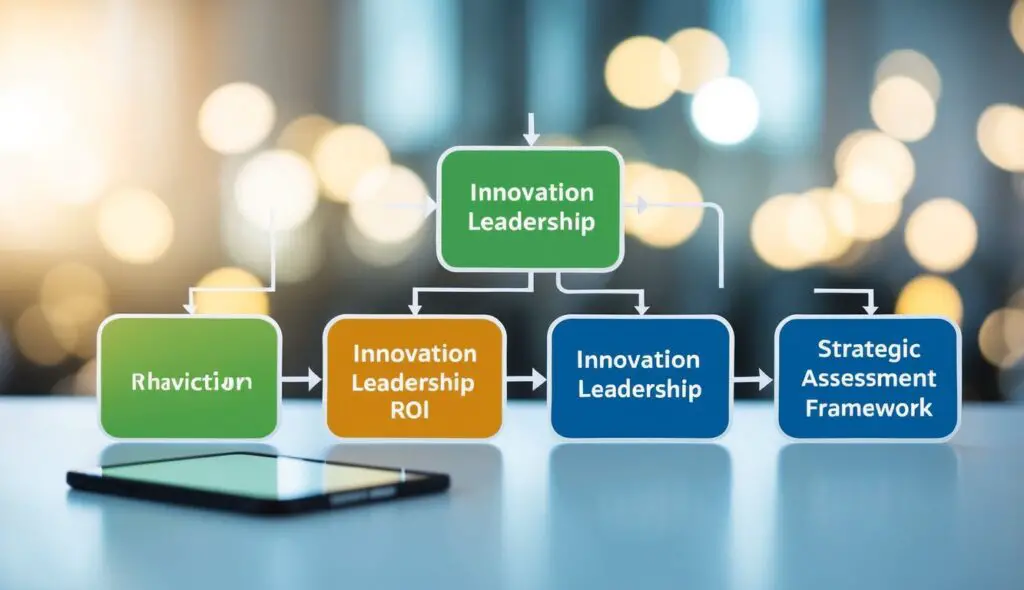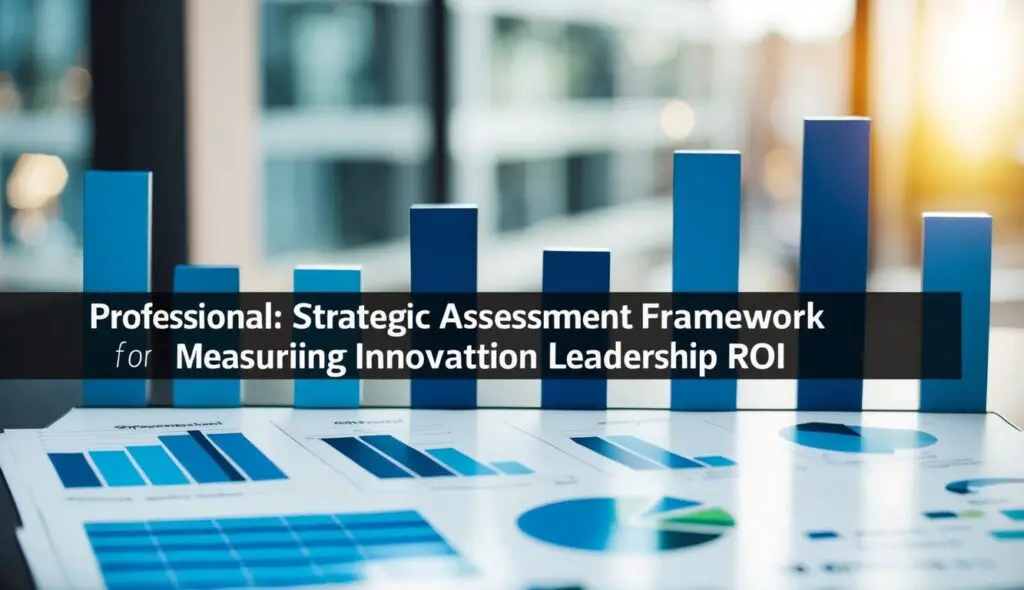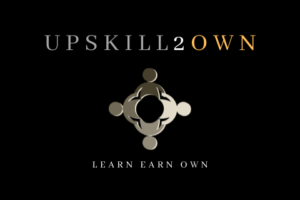How can organizations truly know if their leadership development efforts are paying off? This question plagues many companies investing in innovation and leadership programs.
Measuring the return on investment (ROI) for these initiatives can be tricky, but it’s crucial for making informed decisions about resource allocation and program effectiveness.

A strategic assessment framework for measuring innovation leadership ROI can provide valuable insights into the impact of development programs on organizational performance. By tracking key metrics and employing a systematic approach, companies can better understand the value generated by their leadership initiatives. This not only justifies the investment but also helps identify areas for improvement and optimization.
Effective ROI measurement goes beyond simple financial calculations. It involves assessing both quantitative and qualitative outcomes of leadership development programs.
By looking at factors such as employee engagement, innovation output, and overall business performance, organizations can gain a more complete picture of the benefits derived from their leadership investments.
Key Takeaways
- A strategic framework helps measure the true impact of leadership development programs
- Effective ROI assessment combines financial metrics with qualitative outcomes
- Regular measurement enables continuous improvement of leadership initiatives
Establishing the Basics of ROI in Leadership Development

Measuring the value of leadership programs is crucial for organizations. It helps justify investments and improve future initiatives. ROI calculation provides concrete data on program effectiveness.
Understanding ROI and Its Importance
ROI stands for Return on Investment. For leadership development, it shows the benefits gained compared to resources spent. Calculating ROI helps prove program worth to stakeholders.
ROI analysis reveals:
- Financial gains from improved leadership
- Non-financial benefits like higher employee engagement
- Areas for program improvement
Companies use ROI to:
• Justify budget allocations
• Compare different training approaches
• Align development efforts with business goals
Key Metrics for Assessing Leadership Programs
Effective evaluation uses a mix of quantitative and qualitative measures. Key Performance Indicators (KPIs) track progress and impact.
Common metrics include:
- Productivity increases
- Employee retention rates
- Customer satisfaction scores
- 360-degree feedback results
Leadership behavior changes are also crucial. Surveys and observations can measure improvements in:
- Decision-making skills
- Team collaboration
- Conflict resolution abilities
Innovation ROI Versus Traditional Financial Metrics
Innovation ROI looks beyond standard financial measures. It considers long-term value creation and organizational adaptability.
Traditional metrics focus on:
• Revenue growth
• Cost reduction
• Profit margins
Innovation ROI includes:
- New product development success
- Market share in emerging sectors
- Organizational learning and knowledge sharing
Benchmarking against industry leaders helps set realistic targets. It provides context for interpreting ROI results and identifying areas for improvement.
Strategies for Measuring Innovation Leadership ROI

Measuring innovation leadership ROI requires a strategic approach. It involves aligning goals, collecting data, and examining real-world examples.
Aligning Leadership Development With Strategic Goals
Innovation leaders must link their efforts to company goals. This helps show the value of their work.
Set clear targets for innovation projects. These could be new product launches or process improvements.
Track how leadership actions impact these goals. For example, measure the number of ideas generated and implemented. Look at revenue from new products. Check if costs went down due to better processes.
Make sure leaders are held accountable. Use key performance indicators to track progress. This helps tie leadership efforts to business results.
Data Collection and Analysis Techniques
Good data is key to measuring innovation ROI. Use surveys to gather feedback from team members.
Track metrics like patent filings and time-to-market for new products.
Set up systems to collect data regularly. This could be monthly reports or quarterly reviews. Use software tools to help gather and analyze information.
Look at both hard numbers and soft skills. Measure financial results, but also team morale and creativity. Compare data over time to spot trends.
Create a balanced set of metrics that cover different aspects of innovation. This gives a full picture of leadership impact.
Case Studies and Real-World Examples
Real examples show how innovation leadership drives results. Look at companies known for innovation. Study how they measure their leaders’ impact.
For instance, a tech firm might track how quickly teams turn ideas into products. They could link this to revenue growth and market share gains.
A manufacturing company could focus on cost savings from new processes. They might measure how leadership training leads to more efficient operations.
Use these cases to inspire your own measurement strategies. Adapt the best practices to fit your company’s needs and culture.
How Can a Strengths-Based Workplace Enhance Innovation Leadership ROI?
A strengths-based workplace fosters a culture of collaboration and creativity, essential for innovation leadership. By focusing on exploring strengths in the workplace, organizations empower employees to leverage their unique skills, resulting in higher engagement and productivity. This approach ultimately enhances ROI as innovative solutions emerge from a motivated workforce.
Optimizing Leadership Development Programs for Higher ROI

Effective leadership programs focus on maximizing return on investment through strategic design and measurement. They balance costs with tangible value creation and foster innovation capabilities.
Best Practices for Program Design and Delivery
Leadership programs should align with organizational goals and culture. Customized content tailored to specific leadership challenges yields better results than generic training.
Integrating ROI calculation into program design from the start is crucial. This allows for ongoing assessment and adjustment.
Blended learning approaches combining in-person workshops, online modules, and practical applications tend to be most effective. They cater to different learning styles and reinforce key concepts.
Peer learning and mentorship components enhance knowledge transfer. They create support networks that extend beyond formal training sessions.
Regular feedback loops between participants, trainers, and management help refine program content. This ensures relevance and addresses emerging leadership needs.
Measuring and Enhancing Innovation Capabilities
Innovation metrics should focus on both quantity and quality of new ideas generated. Tracking implementation rates of innovative proposals provides insight into real-world impact.
Leadership programs can foster innovation by teaching creative problem-solving techniques. Encouraging calculated risk-taking and learning from failure are key components.
Assessing innovation capabilities involves measuring improvements in:
- Cross-functional collaboration
- Speed of decision-making
- Adaptability to market changes
- New product/service development cycles
Simulation exercises and real-world innovation projects allow leaders to apply new skills. These practical experiences often yield measurable business results.
Balancing Cost and Value in Leadership Training
A comprehensive cost analysis should include direct expenses like facilitator fees and materials. Indirect costs such as participants’ time away from work must also be factored in.
Value creation can be measured through:
- Improved employee engagement scores
- Increased productivity of teams led by program graduates
- Retention rates of high-potential leaders
- Success rates of strategic initiatives led by trained executives
Conducting a needs assessment before launching programs helps target investments. This ensures resources are allocated to areas with the highest potential impact.
Phased implementation allows for pilot testing and refinement. Organizations can scale up successful elements while adjusting or eliminating less effective components.
Leveraging internal expertise and resources can reduce costs without sacrificing quality. This approach also enhances program relevance to the organization’s specific context.
Leveraging ROI Measurement to Drive Organizational Growth
Measuring the return on investment (ROI) of innovation leadership programs can be a powerful tool for driving organizational growth. By tracking key performance metrics, companies can make data-driven decisions about their leadership development initiatives.
ROI measurement helps identify which programs are most effective at fostering disruptive innovation and incremental improvements. This allows organizations to allocate resources more efficiently and focus on high-impact leadership training.
Tracking leadership ROI also provides insights into how professional development impacts:
• Employee engagement
• Turnover rates
• Market penetration
• Profitability
Companies that measure leadership ROI can better understand the link between leadership capabilities and business results. This knowledge enables them to refine their programs for maximum impact.
Effective ROI measurement looks beyond short-term gains to assess long-term success. It examines how leadership development drives sustainable organizational growth over time.
By leveraging ROI data, organizations can create a virtuous cycle of continuous improvement in their leadership programs. This leads to enhanced innovation, increased market share, and stronger financial performance.
Ultimately, ROI measurement empowers companies to build leadership capabilities that deliver tangible value. It transforms leadership development from a cost center into a strategic driver of growth and competitive advantage.
Frequently Asked Questions
Measuring innovation leadership ROI involves key indicators, effective demonstration methods, and strategic assessment frameworks. Financial measures and comprehensive reporting play crucial roles in evaluating the impact of innovation initiatives.
What are the key indicators for assessing the ROI of innovation leadership initiatives?
Key indicators for assessing innovation leadership ROI include time-to-market for new products, customer adoption rates, and financial returns versus costs. These metrics help quantify the impact of innovation initiatives on business performance.
Innovation metrics should also measure qualitative outcomes, such as improved organizational culture and enhanced problem-solving capabilities. By combining quantitative and qualitative measures, leaders can gain a holistic view of innovation ROI.
How can one effectively demonstrate the ROI from software projects?
To demonstrate ROI from software projects, focus on measurable outcomes like increased productivity, reduced operational costs, and improved customer satisfaction. Track these metrics before and after project implementation to show clear value.
Utilize user feedback and engagement statistics to highlight the software’s impact on end-users. Present data visualizations and case studies to illustrate the project’s success and financial benefits to stakeholders.
What methodologies are recommended for measuring ROI on IT projects?
Recommended methodologies for measuring IT project ROI include cost-benefit analysis, net present value (NPV), and internal rate of return (IRR). These approaches help quantify the financial impact of IT investments over time.
The balanced scorecard method can also be effective, as it considers both financial and non-financial factors. This approach helps align IT projects with broader organizational goals and strategies.
In what ways can financial measures be incorporated into an active ROI strategy?
Financial measures can be incorporated into an active ROI strategy by tracking key performance indicators (KPIs) such as revenue growth, cost savings, and profit margins. Regular financial analysis helps identify the monetary impact of innovation initiatives.
Linking innovation metrics to financial outcomes enables organizations to demonstrate the value of their investments. This approach helps justify continued support for innovation projects and guides resource allocation decisions.
What components should be included in an ROI report for high-impact projects?
An ROI report for high-impact projects should include a clear project overview, objectives, and expected outcomes. Financial metrics such as NPV, payback period, and ROI percentage are essential components.
The report should also feature qualitative benefits, customer feedback, and alignment with strategic goals. Including risk assessments and sensitivity analyses can provide a more comprehensive view of the project’s potential impact.
Which steps are involved in building a comprehensive ROI calculator for business projects?
Building a comprehensive ROI calculator involves identifying all relevant costs and benefits associated with the project. This includes direct expenses, indirect costs, and projected revenue increases or cost savings.
Next, you need to determine the time frame for analysis and apply appropriate discount rates to account for the time value of money. Then, include fields for inputting project-specific variables and create formulas to calculate key metrics like NPV, IRR, and payback period.

